(180 products available)










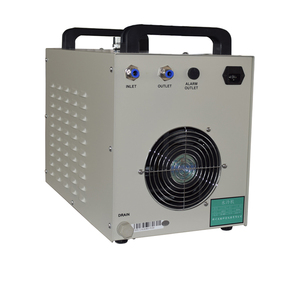
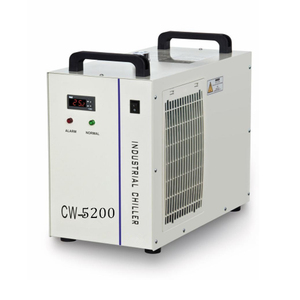
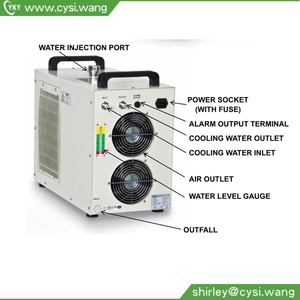
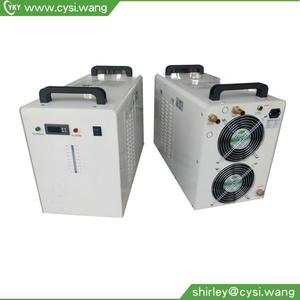


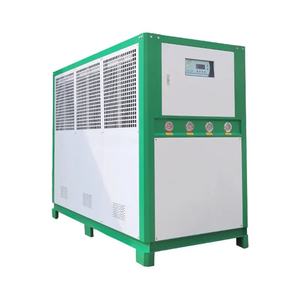

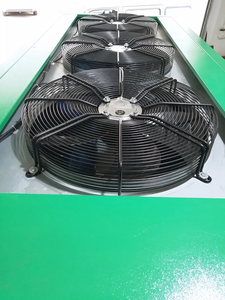
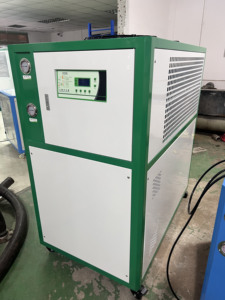








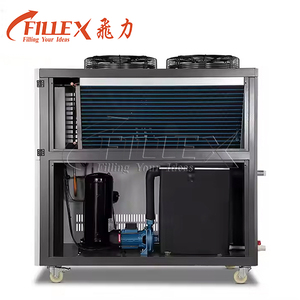

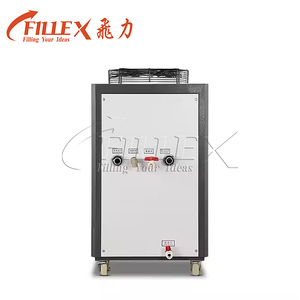

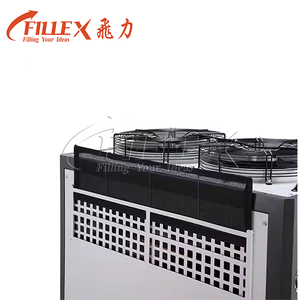


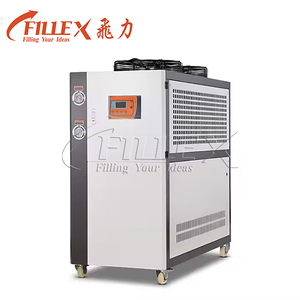
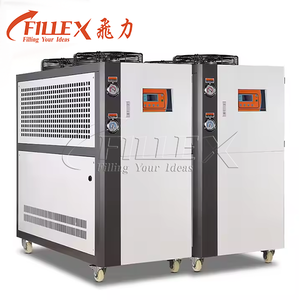
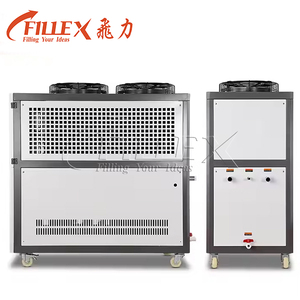




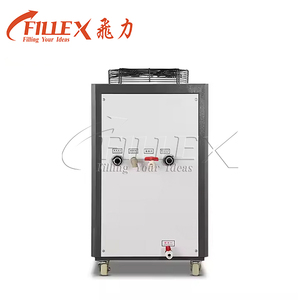






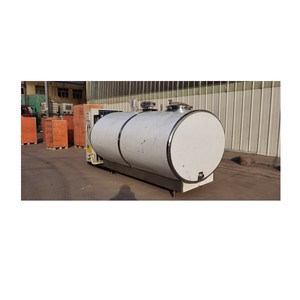




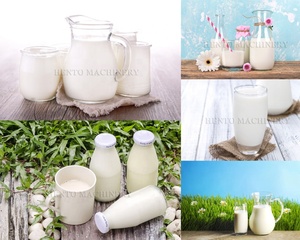













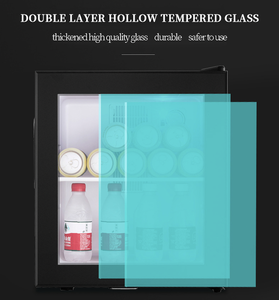
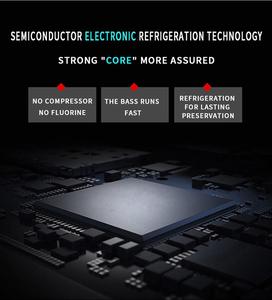
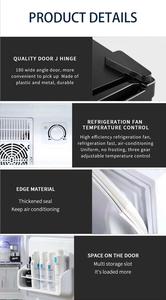





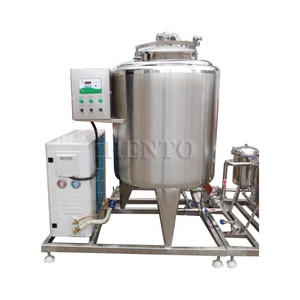



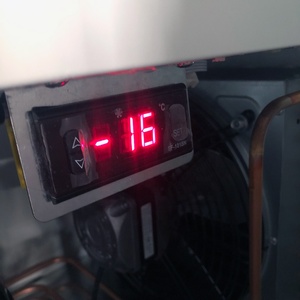




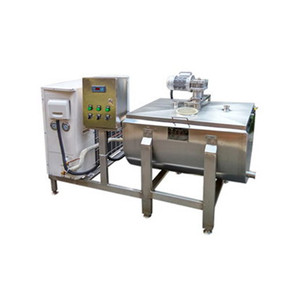










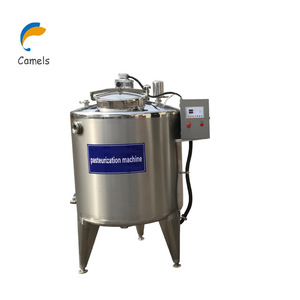











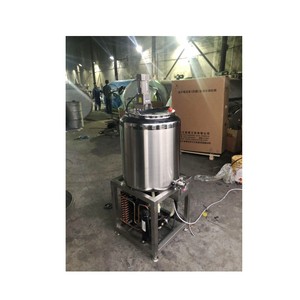








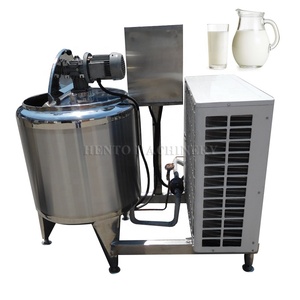



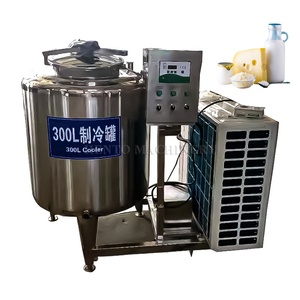
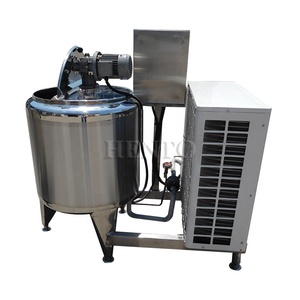






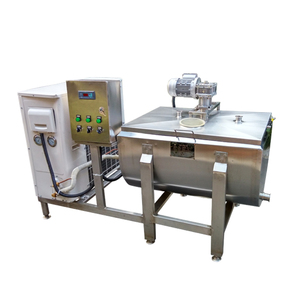





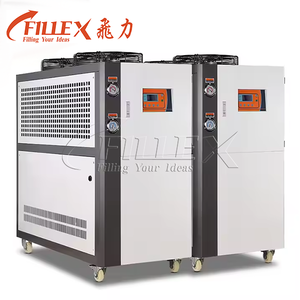
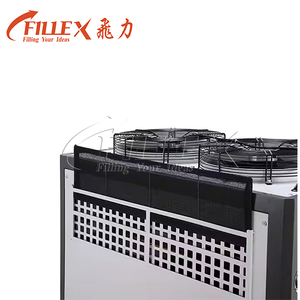


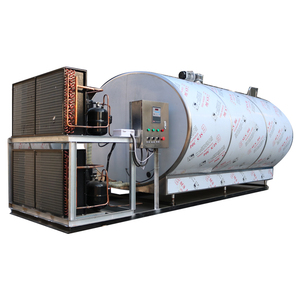
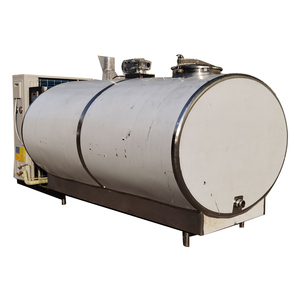


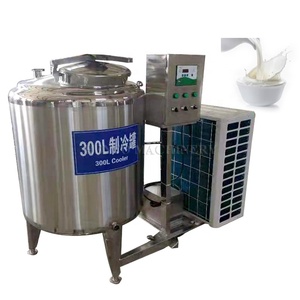
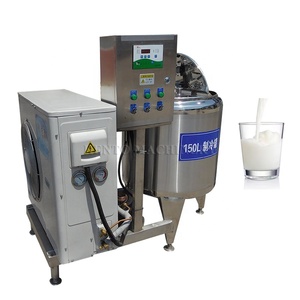


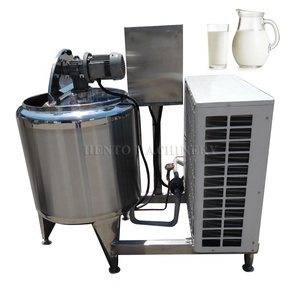
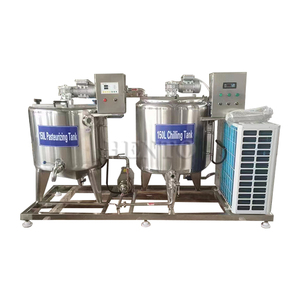



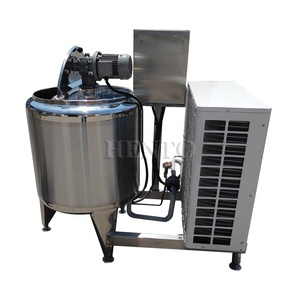




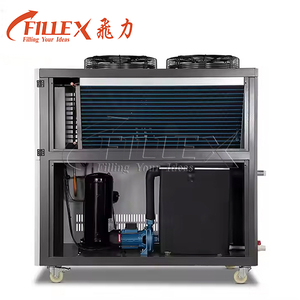

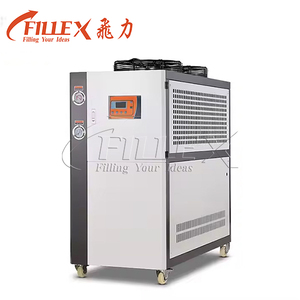


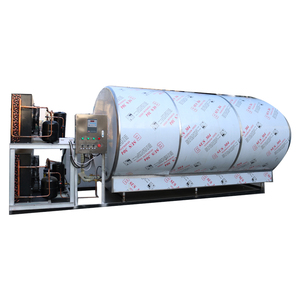




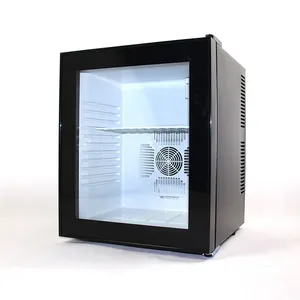







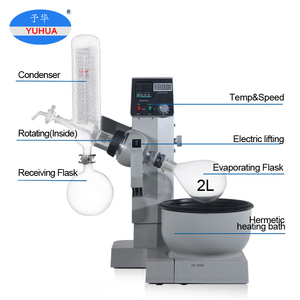
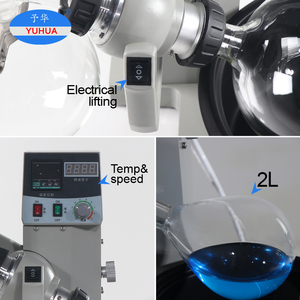


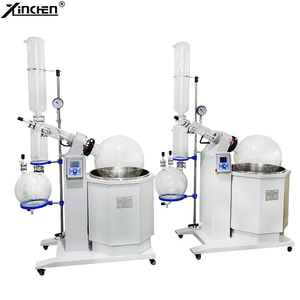


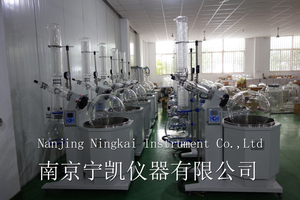


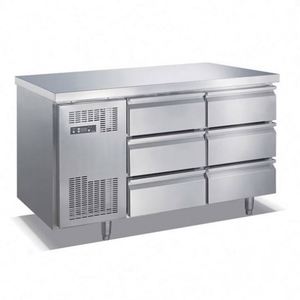

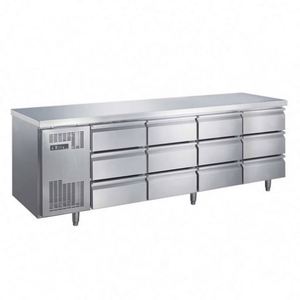











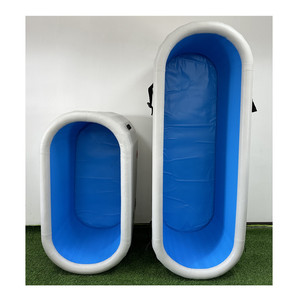
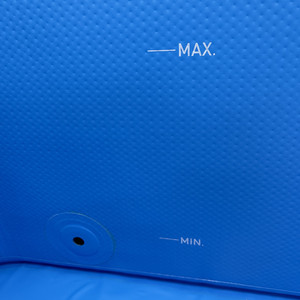


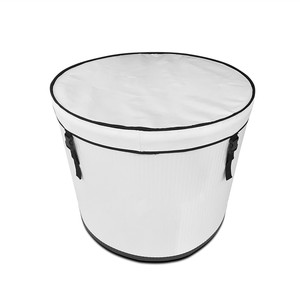


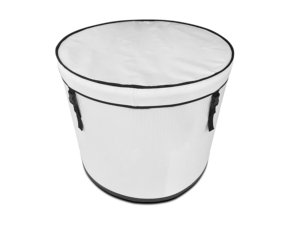
Water Cooled Chilllers
The 400-liter chiller circulates water through a cooling coil to absorb heat in the water-cooled version. The chilled water is then pumped throughout the facility for cooling purposes. These chillers are efficient and often used in large systems. Although the setup is quite large and includes a cooling tower or a water reservoir, the appliances are relatively cheap to operate for the company with more significant cooling needs.
Air-Cooled Chillers
Air-cooled chillers utilize ambient air to cool the refrigerant. Fans draw in air, which cools the refrigerant before it enters the compressor. This type of the 400-liter chiller doesn't require water sources for cooling, which is an advantage because it can be installed easily without being set up specifically for the cooling tower and water lines. However, they are less efficient than water-cooled chillers, primarily in high-temperature situations.
Heat Pump Chillers
Heat pump chillers are different from the regular 400-liter chillers, as they can provide heating by reversing the refrigeration cycle. They absorb heat from a low-temperature source and concentrate it to release at a higher temperature. Heat pump chillers are mainly used in locations that need both heating and cooling or as backup heaters in case of failure. They are ideal for R&D centers that require temperature maintenance to avoid damage to their equipment.
Absorption Chillers
Absorption chillers utilize heat (from natural gas, steam, or hot water) instead of electricity to drive the refrigeration cycle. They use an absorbent solution to cool the refrigerant. Absorption chillers are mainly used in facilities that have access to heavy heating sources or wish to reduce their electrical load. Although they are not as effective as compression chillers, they can be used to generate electricity and thus minimize the costs.
Plastics Industry
The 400-liter chiller is mainly used in the plastics industry to control the temperature during molding and extrusion processes. In order to achieve the desired shape, the molds used in plastic injection molding must be kept at a specific temperature. Chillers help avoid overheating, which will lead to material degradation, early wear on the machine, or even production stops, among other things. By maintaining proper temperature, the chiller contributes to producing high-quality plastic components with greater accuracy in the plastic industry and minimal waste.
Printing Industry
In the printing industry, refrigeration is vital for controlling ink and paper temperature during printing processes. Chill 400-liter systems keep inks at optimal viscosities and prevent them from drying too fast or too slowly in offset printing. They also cool printing plates and paper to ensure that the images produced are sharp and clear. Moreover, maintaining this temperature in the printing process helps prevent paper warping, thus improving its quality and consistency. Without adequate cooling, companies in the printing industry will experience decreased production.
Chemical Industry
The chemical business will also need a chiller to control chemicals, solvents, and other compounds' reaction and processing temperatures. If the temperature is not controlled, the reactions in the chemical industry can vary greatly, thus leading to disastrous results, including explosions or the production of toxic substances. Here, chillers absorb heat from chemical reactors, maintaining a safe and desired temperature range. This, in turn, helps improve product safety and quality while reducing the risk of equipment damage and thus increasing efficiency within the chemical facility.
Food Industry
The food industry uses 400-liter chillers to help preserve food by cooling the productions, such as pasteurization, fermentation, and mixing. Chillers maintain bacteria at low temperatures, thus increasing their lifespan. In ice cream production, for example, a chiller maintains the right temperature conditions during mixing to achieve the desired texture. Dairy Fermentation Processes also need temperature control, which can be queried on a chiller. In addition, the food industry relies more on chillers for safety, quality preservation, and compliance with the regulation concerning temperature control.
Die Casting
Chillers control the temperature of molten metal and molds during die casting in the die-casting business. The mold must be cooled uniformly for the molten metal to solidify correctly. Any irregularities in the cooling process will lead to defected castings such as cracks, warping, or incomplete filling the mold. Chillers help extract heat from the mold, which solidifies the metal at a controlled rate. This enhances the quality of the cast products, thus making it indispensable for the die-casting industry to have chillers.
Cooling capacity
The 400-liter chiller has a relatively large cooling capacity; hence, it is suitable for significant industrial applications. The chillers provide precise temperature control by removing heat from fluids at a relatively great rate. The average cooling capacity of a 400-liter chiller can be up to several kilowatts, depending on the particular model and application requirements.
Energy efficiency
As energy costs can represent a sizeable percentage of operating expenditure and affect sustainability, the efficiency of the chiller is critical for any business. Many 400-liter chillers have energy-efficient compressors and high-performance heat exchangers that minimize energy consumption while still maintaining optimal cooling performance.
Durable construction
These chillers are designed for continuous operation in demanding environments. The primary components are constructed with robust materials, including stainless steel or treated aluminum, to resist corrosion and wear. Frequent use means the components must withstand long operational hours without failure.
Refrigerant type
A 400-liter chiller is manufactured using different types of refrigerants, including R-134A, R-404A, or R-407C. It is crucial to select a refrigerant that will be compatible with the existing HVAC system, as it can sometimes have an impact on the ozone layer or greenhouse effect. Thus, refrigerants are highly regulated to reduce environmental impact.
Control systems
They are often equipped with advanced digital control systems that allow for precise temperature management. This includes PLC or digital controllers that offer programmable settings and real-time monitoring. Some may integrate with building management systems for enhanced automation. Depending on the model, these chillers can include sensors for temperature, pressure, and fluid levels to monitor and ensure efficiency and safety.
Site assessment
Before installation, conducting a thorough site assessment is crucial. This means evaluating the installation area, considering any possible space limitations, and identifying existing electrical and piping systems. During this process, there should be some assessment and determination of the power supply to the 400-liter chiller, as it consumes great energy and requires proper backing.
Base preparation
The chiller 400 liters requires a solid and level base for proper operation. As they are relatively heavy, concrete foundations should be poured to support the unit and prevent vibrations. In addition to this, the foundation must be solid and level to prevent vibrations from affecting its operation.
Refrigerant piping and insulation
Proper piping is important for the functionality of the chiller. Install the evaporator and condenser refrigerant lines, ensuring proper slope and support. Insulate all the pipes to prevent energy loss. The insulation also helps prevent condensation, which can damage the surrounding areas. Additionally, it will comply with the energy efficiency regulations.
Electrical connections
The electrical connections for the pump or chiller need to be made to the power supply. Following national and local electric codes is vital, connecting the controls and other components. To ensure safety and functionality, it must be grounded. Electrical work should only be done by qualified people, as it can be very dangerous and life-threatening.
Commissioning
After the installation, the chiller needs to be commissioned to make it operate at the desired level. The procedures can include: checking the operating parameters, testing the controls, and balancing the flow, among other things. Commissioning also entails recording the data and making sure that the device meets the manufacturer's specifications. It helps ensure the machine will work at optimum energy for sustainability.
Regular inspections
Regular inspections on the 400-liter chiller in 400 liters are required to seek any possible signs of wear or damage. Since the machine is only operated most of the time, the point at which it will failure is when it is overworked due to negligence of maintenance. Regular schedule by developed checklists can ensure all the components responsible for the functioning are checked.
Heat exchanger cleaning
Keeping the heat exchangers clean will enhance the heat transfer capability, so it is necessary to frequently clean the chiller and avoid the accumulation of debris, dust, and other contaminants. The director also recommends using non-corrosive cleaners and having a water-cooled chiller.
Fan and condenser maintenance
Its fans and condensers should be kept clear and clean, as this affects airflow. Inspect the fan blades for bends and debris and clean the blade. In addition, the condenser coils should be brushed regularly and followed by a coil cleaner to avoid the inefficiency that will be generated by dirty coils.
Regular lubrication
The various moving parts within the 400-liter chiller, such as fans and pumps, need regular lubrication to reduce friction and wear. The lubrication is done by using the manufacturer's recommended grease or oil for the machinery, as improper lubrication will affect the parts, leading to a chiller breakdown.
Re-calibrate periodically
Calibration of the controls and sensors at regular intervals ensures they provide accurate readings. If left for a long time without recalibrating them, they will give erroneous information, which will, at some point, affect the chiller's performance or even lead to over or under-conditioning of the items.
Heat Exchanger Leaks
Any form of leakage in the heat exchangers is considered one of the most critical fixes since it will interfere with the chiller and cooling process. However, when there is a leak, the refrigerant will escape, which will affect the machine's overall production. In many instances, smaller leaks can be fixed using sealants; in extreme cases, exchanger replacements will be needed. The manufacturers are the best source of identifying this problem and fixing it.
Compressor Issues
As one of the most important parts, anything that hinders the functioning of an organic compressor results in poor chugging performance. Problems such as noise, overheating, and frequent cycling may all come down to issues such as worn mechanical parts, electrical failures, or faulty valves. A good way to fix it is by replacing the damaged components. In the worst case, an old compressor will need to be replaced if it was servicing the unit for many years.
Electrical Failures
Electrical failure, mainly wiring issues or faulty sensors, is another common problem when it comes to the cooling chiller 400 liters. If not addressed early enough, these issues may cause much larger problems or even lead to the shutdown of the operations. Repairing electrical problems involves rewiring faulty components and replacing some damaged parts. Ideally, electrical work should be done by qualified personnel so as not to compromise the unit.
Contaminated Filters
Filters that have too much dirt and debris not only affect the air and refrigerant flow but also lead to the parts working harder and, in turn, easier to wear out. Exposure to dirt can cause more significant problems, such as mechanical failure. Contaminated filters should be replaced immediately or cleaned to prevent damage to the machine.
Certification and compliance
The reputable 400-liter chillers are commonly produced under the required health and safety rules and regulations by national and international standards organizations such as ASHRAE, ANSI, and EPA. Compliance with such regulations means that the organizations ensure the machines are handled and operated safely and in an environmentally-friendly manner while producing optimum performance and energy efficiency.
High-quality components
In industries, 400-liter chillers are manufactured using premium-quality components, including compressors, pumps, and electrical elements, to bear the maximum load. These components are created with superior materials that reduce wear and tear while increasing the lifespan. Using these quality materials helps guarantee the chiller's performance and enhances its safety by lowering the likelihood of failures or malfunctions.
Regular maintenance
Regular maintenance is maintained for optimal performance and safety. However, in due course of time, as the unit operates, several parts need to be cleaned, inspected, and repaired. Lack of maintenance can lead to some problems: overheating, refrigerant leaks, or electrical failures, which result in safety problems as well as decreasing efficiency. Organizations are encouraged to stick to a preventive maintenance schedule to ensure each component is running smoothly and may catch any potential issues before they develop into bigger problems.
Monitoring systems
A lot of 400-liter chillers come equipped with warning and monitoring systems, which include temperature and pressure gauges, as well as alarms. These systems help keep the operational parameters within limits and quit the machine when they go beyond that. It is important to note that this kind of early detection helps avoid problems from developing and thus cutting time and costs as well as preserving the safety of the workforce.
Sustainability practices
The 400-liter chiller uses efficient refrigerants with a low global warming potential (GWP) to address various environmental issues. These refrigerants have minimal effects on the ozone layer and global warming potential. These units are designed to consume the least amount of energy possible, hence cutting down on electricity bills while limiting the impact on the environment.
A1: 400-liter chillers are generally designed for large-scale commercial and industrial applications, providing robust cooling power for high-demand environments such as manufacturing facilities, hospitals, data centers, and large commercial buildings. The actual cooling capacity can vary widely, depending on specific models and configurations. However, many 400-liter chillers are typically in the range of 5 to 100 kilowatts.
A2: Several industries can benefit from a 400-liter chiller, including manufacturing (especially for processes like injection molding and machining), food and beverage (for cooling during processing and storage), pharmaceuticals (for temperature control in production and storage), and data centers (for cooling equipment and maintaining optimal temperatures).
A3: It helps by providing consistent and precise temperature control during processes like pasteurization, fermentation, and cooling ingredients. This prevents bacterial growth, extends shelf life, and ensures the safety and quality of food products.
A4: Yes, with proper housing and protection from the elements, a 400-liter chiller can be used in outdoor applications. Buyers should ensure that any chillers intended for outdoor use are specifically rated for such conditions and have adequate weatherproofing and corrosion resistance.
A5: A chiller is a refrigeration system that removes heat from a liquid, typically water, and recirculates it through a building or process for cooling. A cooling tower, on the other hand, is a heat rejection device that expels waste heat from a building's HVAC system or industrial process. Cool water from the chiller absorbs heat from the environment or process and is then sent to the cooling tower to dissipate the heat, often with the help of ambient air and water evaporation.